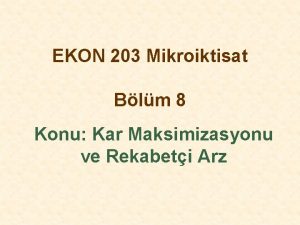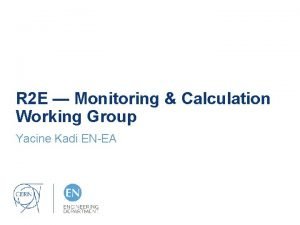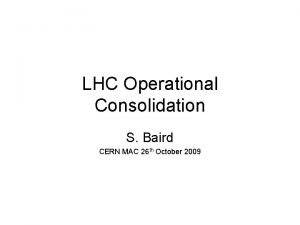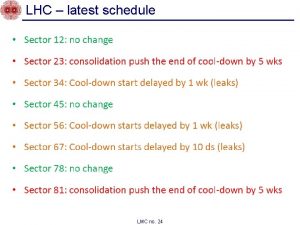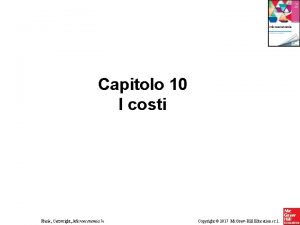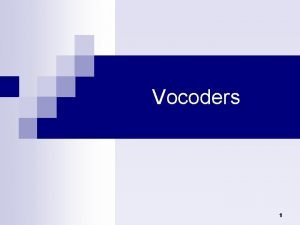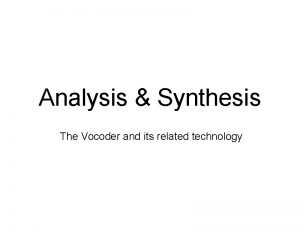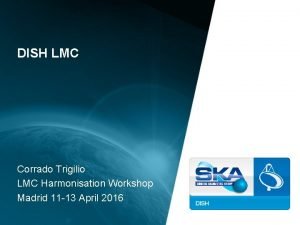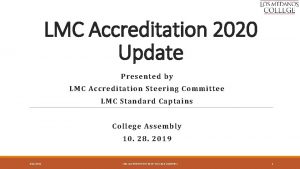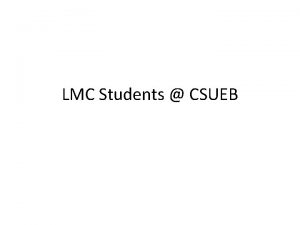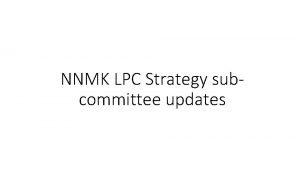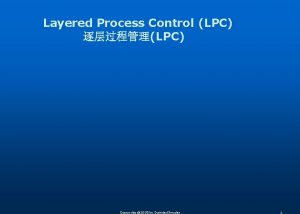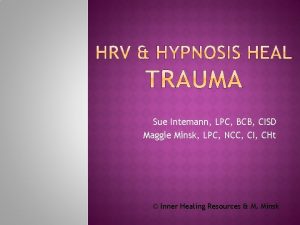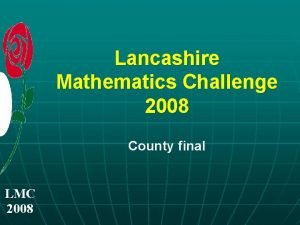LMC 30 27 08 09 LPC 1 1











- Slides: 11

LMC 30 27 -08 -09 LPC 1

1. 9 K, 0 T, 7. 5 k. A run 090813. 21 Heat pulse A. Verweij, TE-MPE. 30 Sept 2009, LMC meeting

Calculated temperature along the bus (1. 9 K, 2 T, 6000 A) U=100 -150 m. V: switch off current during test A. Verweij, TE-MPE. 30 Sept 2009, LMC meeting

Correlation experiment vs. calculation A. Verweij, TE-MPE. 30 Sept 2009, LMC meeting

Conclusion on ‘Analysis FRESCA test’ Ø The simulation code (QP 3) is now validated!!! There is a good agreement between experiment and calculations for the voltage signals, the temperatures and thermal runaway times (for 1. 9 K and 4. 3 K and currents from 2 -12 k. A). The quench currents of more than 50 test cases can be simulated with an accuracy better than a few hundred Amps. Ø To fit the calculations to the experiments, the cooling to helium had to be reduced by about 15% as compared to previous assumptions, possibly due to the presence of film boiling. A separate thermal test by David Richter will be done in coming week. A. Verweij, TE-MPE. 29 Sept 2009, TE-TM meeting

RB: case 2 (quench in GHe environment) A. Verweij, TE-MPE. 30 Sept 2009, LMC meeting

Summary table of maximum allowable additional resistance for RB circuit with tau=50 s. Safety margin not included Case LHe (case 1), RRRcable=80, no He cooling 3. 5 Te. V 55 4 Te. V 42 5 Te. V 27 LHe (case 1), RRRcable=120, no He cooling 70 55 33 LHe (case 1), RRRcable=80, with He cooling 78 65 45 LHe (case 1), RRRcable=120, with He cooling 102 84 55 GHe (case 2), RRRcable=80, tprop=10 s 75 62 (40) GHe (case 2), RRRcable=80, tprop=20 s 103 85 (60) GHe (case 2), RRRcable=120, tprop=10 s 98 78 (52) GHe (case 2), RRRcable=120, tprop=20 s 120 110 (74) tau=100 s LHe (case 1), RRRcable=120, with He cooling 7 Te. V 26 A. Verweij, TE-MPE. 30 Sept 2009, LMC meeting For info

Conclusion on ‘Safe current calculations’: Ø After analysis of the ‘FRESCA 61 m. W test’ and taking RRR b u s =100, RRR c a b l e =120, tau R B =50 s, tau R Q =10 s, and assuming a maximum R a d d i t =90 m. W, one can conclude that operating at 3. 5 Te. V is safe. Operation at 5 Te. V seems risky, especially because at this energy a magnet quench could propagate quickly to the interconnect by means of normal zone propagation in the bus. Ø Better estimates of: Ø Thermal propagation through the M 1 -M 3 lines, Ø RRR c a b l e (tests are ongoing in MSC group), Ø Heat flow through the bus (and interconnect) insulation (test planned for this week) are important to further improve the accuracy of the calculations of the ‘safe current’. Ø A few more FRESCA tests in a ‘machine-type layout’ are planned for the coming months and will give additional experimental data for better understanding of thermal processes. Samples containing low RRR b u s (100 -150) and R a d d i t with values between 20 and 50 m. W are most important. A. Verweij, TE-MPE. 30 Sept 2009, LMC meeting

27 -08 -09 LPC 9

27 -08 -09 LPC 10

27 -08 -09 LPC 11
